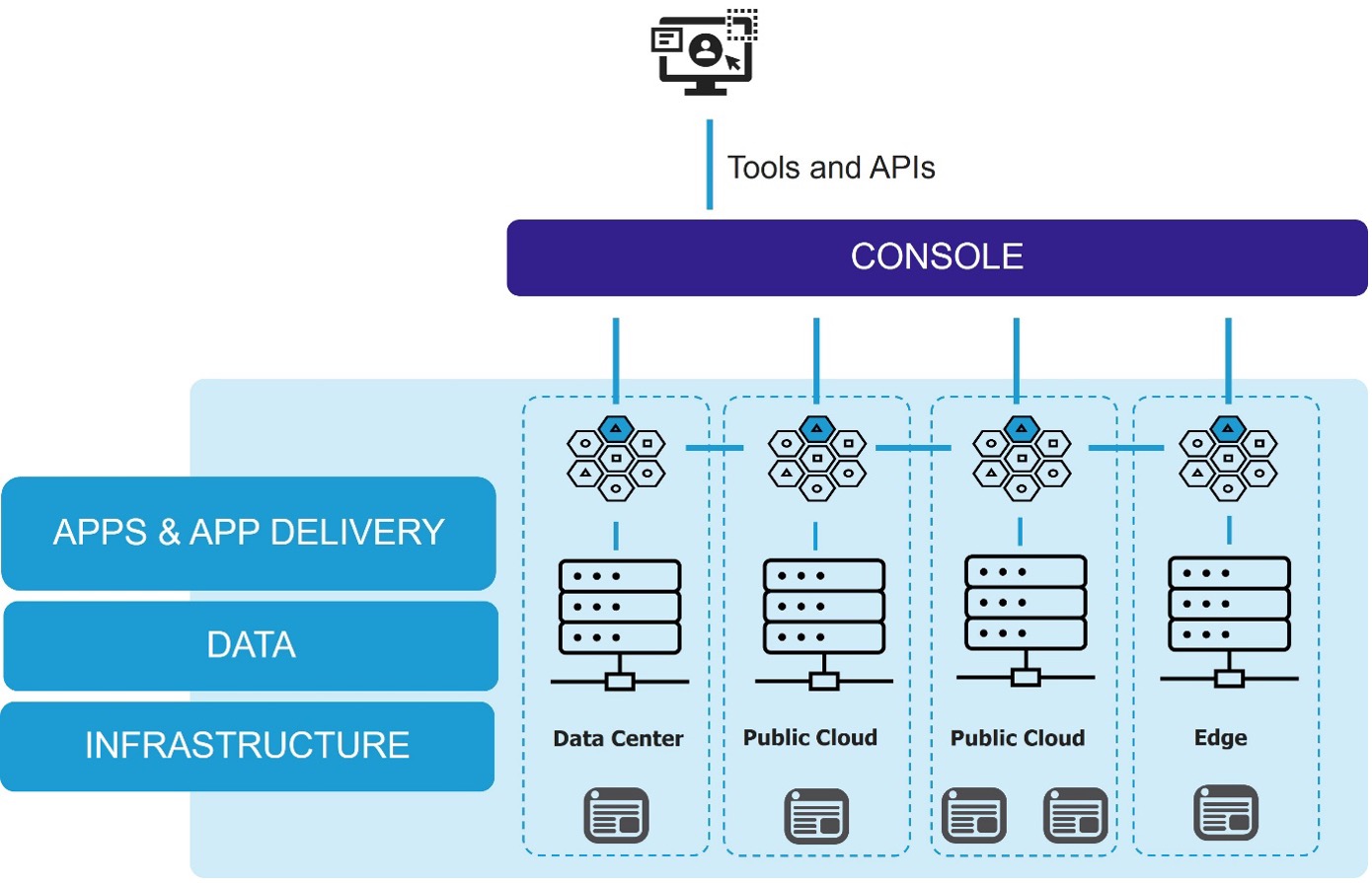Supercloud-Einfachheit durch Multi-Cloud-Networking
Hybrid-IT ist mittlerweile Realität und viele Unternehmen nutzen mehrere öffentliche Clouds für KI, Sicherheit und globale Reichweite. Daher besteht dringender Bedarf nach einer Lösung zur Vereinfachung der Betriebsabläufe. Supercloud schlägt genau das vor.
Ich spreche seit einigen Jahren hier und da und auch dort drüben über Supercloud. Der Begriff selbst ist nicht populär. Die meisten Technologieexperten sind erschöpft von der scheinbar endlosen Menge an Schlagwörtern, die Vordenker gerne produzieren.
Dies ist definitiv ein Schlagwort und keine wirkliche Technologie wie eBPF oder WASM. Die Vision besteht darin, das komplexe Gewirr zu vereinfachen, das Unternehmen aufgrund der Unterschiede zwischen den Tools und APIs, die zum Bereitstellen, Betreiben und Überwachen von Apps und APIs über mehrere Eigenschaften hinweg erforderlich sind, in ein endloses Netz der Komplexität verstrickt.
Daher empfiehlt es sich, mit einer Definition des Begriffs „Supercloud“ zu beginnen. Da dies mein Blog ist, ist dies meine Definition des Begriffs „Supercloud“:
„ Supercloud ist eine Cloud-Architektur , die es hybrider IT ermöglicht, jede Ebene des IT-Stacks über Cloud-Anbieter hinweg, in traditionellen und Cloud-Umgebungen vor Ort und am Edge nahtlos zu betreiben.“
Wie kann man diese Vision also in die Realität umsetzen?
Es ist immer am besten, am Anfang zu beginnen, und der Beginn der Komplexität, die dem Betrieb als Hybridorganisation innewohnt, liegt ganz unten im IT-Stack: bei der Infrastruktur.
Dabei handelt es sich um das Bindegewebe zwischen dem Rechenzentrum und der öffentlichen Cloud, also die Netzwerkschichten, die es den Verbrauchern ermöglichen, Daten zu nutzen, Clients anzurufen und Pakete von einem Ort zum anderen zu übertragen. Die zur Vereinfachung der Konnektivität vorgeschlagene Lösung wird auf dem Markt häufig als Multi-Cloud-Networking oder MCN bezeichnet.
Multi-Cloud-Networking vereinfacht im Kern die Konnektivität, indem es die Art und Weise standardisiert, wie Netzwerke in allen Umgebungen eingerichtet und betrieben werden. Dabei spielt es keine Rolle, ob Public oder Private Cloud, ob im Rechenzentrum oder am Edge. Bei der Multi-Cloud-Vernetzung wird grundsätzlich ein Netzwerknetz über alle Liegenschaften gelegt, das die Komplexität dadurch reduziert, dass an jedem Standort die gleichen Strukturen, Konfigurationen und Konsolen für Betrieb und Überwachung verwendet werden.
Allerdings bietet nicht jede MCN-Lösung dieselben Funktionen. Daher ist es wichtig, die Lösung auf ihre Fähigkeit zu prüfen, mehrere Eigenschaften nicht nur zu verbinden, sondern auch zu sichern . Ohne Sicherheit beseitigt die Lösung lediglich einen Teil der Komplexität und bleibt gleichzeitig der Herausforderung, für alle Anwendungen einheitliche Sicherheit zu gewährleisten, treu.
Ebenso wichtig ist es, die Komplexität zu berücksichtigen, die durch die Notwendigkeit zur Optimierung der Anwendungsleistung entsteht. Denn niemand verbindet Clouds nur aus Spaß am Verbinden von Clouds. Organisationen nutzen mehrere Clouds, um eine globale Reichweite zu erzielen, das Wachstum durch schnelle Skalierung zu beschleunigen oder heute KI-Dienste zu nutzen, um sich einen Wettbewerbsvorteil zu verschaffen.
Diese Verwendungszwecke bedeuten letztendlich Anwendungen und APIs, und Anwendungen benötigen Anwendungsdienste. Dabei handelt es sich um Sicherheits- und Bereitstellungstechnologien, die Anwendungen und APIs optimieren, sichern und skalieren. Sie sind Teil des Bindegewebes und treten häufig als proxybasierte Lösungen auf, die Funktionen wie das Erkennen und Stoppen von Bots, den Schutz vor DDoS-Angriffen und die automatische Anpassung des Zustellungsorts bieten, um das bestmögliche Benutzererlebnis zu gewährleisten.
Auch diese Dienste tragen zu dem komplexen Sachverhalt bei, der die Bereitstellung digitaler Dienste heutzutage oft zu einer frustrierenden – und kostspieligen – Aufgabe macht. MCN, das App-Dienste als festen Bestandteil der Lösung umfasst, bietet dieselben Vorteile der Standardisierung wie das Netzwerk: niedrigere Kosten, ähnliche Tools und eine einzige Konsole für die Verwaltung.
Die passende MCN-Lösung muss die wichtigsten Herausforderungen meistern, die Ihnen beim Betrieb über mehrere Cloud- und Rechenzentrumsstandorte hinweg begegnen:
- Einheitliche Sicherheit für alle Anwendungen und APIs
- Komplexität und Kosten im Zusammenhang mit mehreren Tools, APIs und Konsolen
- Optimieren der Leistung von Anwendungen
Unseren jährlichen Untersuchungen zufolge stehen diese drei Probleme seit fast zehn Jahren ganz oben auf der Liste der Multi-Cloud-Herausforderungen. Supercloud ist die Antwort auf diese Herausforderungen und MCN ist die Lösung zum Aufbau der Supercloud-Grundlage.
MCN – zumindest die Implementierung von F5 – wurde entwickelt, um diese Herausforderungen zu bewältigen und den Grundstein für eine einfachere Lösung zum Betrieb hybrider IT zu legen.

